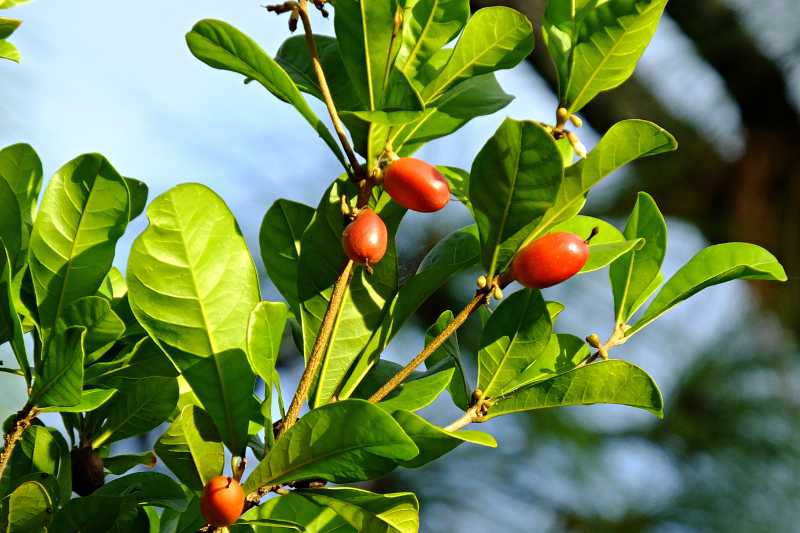Still relatively unknown, Synsepalum dulcificum, commonly known as the miracle fruit or miracle berry, is a species of fruit tree cultivated for its edible fruits with astonishing properties! It transforms any acidic food into something sweet, without calories. Let's discover it!

Native to the humid tropical climate of West Africa, where it is traditionally consumed before meals, Synsepalum dulcificum is a beautiful fruit tree belonging to the family of Sapotaceae. Like orchids, it is quite sensitive to cold and requires a humid atmosphere and warmth. This is why this tropical bush can only be grown in our temperate climates as a houseplant, in a conservatory or warm greenhouse that can be taken outside during the pleasant season.
The miracle fruit forms a small bush measuring about 2 to 6 m tall in its native regions, but will not exceed 1.5 m indoors. Its appeal lies in the appearance of small oval red fruits, about 2 cm long, resembling cranberries, on the lush foliage. These famous edible berries are what give the plant its miraculous reputation. And for good reason: the pulp of the "miracle fruit" contains miraculin, a protein that has the ability to impart sweetness to any food, even the most acidic!
Once in the mouth, miraculin tricks our papillae and gives the sensation that any food is sweet, hence its name. This miraculous property lasts from 15 minutes to about 2 hours, depending on individual sensitivity. These small berries could well become a true natural alternative with 0 calories, to replace sugar in cooking! The flowers bloom throughout the year, so you can enjoy several harvests.
You should cultivate it in a slightly acidic substrate (40% potting soil, 40% heather soil, and 20% sand), in a bright location but without direct sunlight, at a temperature of 20-25°C in summer (15-18°C in winter). It requires very high humidity, if not 100%: mist the plant with fresh water regularly.
And discover our unusual and exotic fruit trees!































Comments